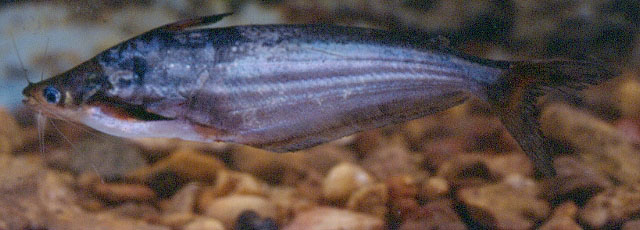| Schilbeidae (Schilbid catfishes) |
| 50 cm TL (male/unsexed) |
|
demersal, potamodromous |
| Africa: St. Paul River in Liberia up to the Pra in Ghana, including the rivers St. John, Farmington, Cess/Nipoué, Cavally, San Pedro, Sassandra, Boubo, Bandama, Agnébi, Comoé and Tano Rivers (Ref. 57127). |
|
Dorsal spines (total): 1. Diagnosis: large species, up to 300 mm SL or more; anterior nostrils never closer to each other than the posterior ones; inner margin of pectoral-fin spine finely denticulate; 39-70 branched anal-fin rays; 8-15 gill rakers on lower limb of first gill arch; adipose fin always present (Ref. 57127).
Coloration: head and back dark brown; brownish lateral bands above and below lateral line, above and along anal-fin base, and along anal-fin margin; dorsal fin, pectorals and pelvics yellowish, the first two often mottled (Ref. 57127). |
| Feed mainly on terrestrial insects (Hymenoptera, Hemiptera, Coleoptera) washed into the water and on mayfly larvae (Ref. 6868). Oviparous, eggs are unguarded (Ref. 205). |
|
(Ref. 96402)
|
| harmless |
|
Source and more info: www.fishbase.org. For personal, classroom, and other internal use only. Not for publication.
Page created by Jen, 05.08.02,
php script by kbanasihan 06/09/2010 ,
last modified by
dsantos, 20/08/10

